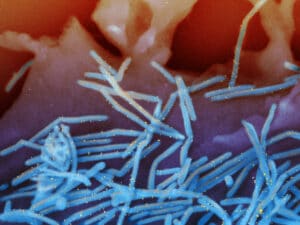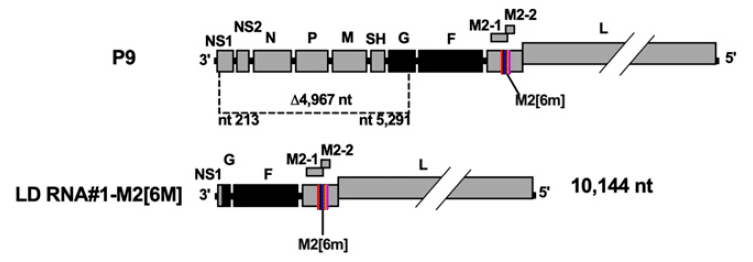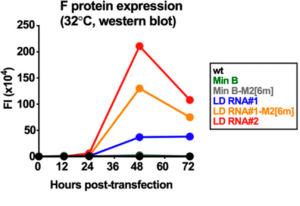
Vaccine safety is of the utmost importance. Respiratory syncytial virus (RSV) is the most common cause of severe lower respiratory tract illness in infants and young children. Much like the flu, it can also cause severe disease in the elderly or immunocompromised adults, making it an important target for vaccine development. In a recently published study, researchers used PacBio long-read sequencing to evaluate the genetic stability of a live-attenuated RSV vaccine candidate and observed previously unknown adaptation mechanisms that was missed by short-read sequencing.
Codon-pair deoptimization involves recoding of open reading frames (ORFs) to reduce protein expression and is used as a mechanism for creating live-attenuated vaccine candidates. It is important, however, to understand whether deoptimized viruses could accumulate mutations under selective pressure that might lead to de-attenuation.
To this end, researchers of the Laboratory of Infectious Diseases at the National Institute of Allergy and Infectious Diseases used a combination of sequencing technologies to examine codon-pair deoptimization in human RSV under selective pressure.
In their PNAS paper “Rescue of codon-pair deoptimized respiratory syncytial virus by the emergence of genomes with very large internal deletions that complemented replication,” Cyril Le Nouën et al. tested the genetic stability of a live-RSV vaccine candidate that had been attenuated by codon-pair deoptimization of its glycoprotein genes. As one of the hallmarks of attenuation, the replication of this RSV strain was reduced at higher temperatures. This feature was used to test stability of the attenuation: the virus was passaged in cell culture over several months at continuously increasing temperatures. After each passage, the entire virus genome (about 15 kb) was sequenced to identify mutations.
The researchers discovered that, while the RSV strain accumulated point mutations, they had minimal effect on viral replication. Unexpectedly, however, using a combination of long-range PCR and PacBio HiFi sequencing, the scientists identified large deletions that appeared early in the serial passage and became the dominant species. These large-deletion genomes rescued RSV glycoprotein expression, thereby restoring replication of the deoptimized virus. They hypothesized that these large-deletion genomes occurred through polymerase jumping.


“Under selective pressure, Large Deletion (LD) genomes were selected to restore rather than to inhibit the replication of a single-stranded RNA virus, attenuated by [codon-pair deoptimization] of two ORFs,” the authors report. Such a mechanism of compensation was previously unknown for RNA viruses and suggests that the accumulation of DI (defective interfering) genomes has to be carefully investigated during the generation and evaluation of live-attenuated vaccine candidates.
With growing interest in viral sequencing and vaccine development, understanding how viruses adapt under selective pressure is essential. PacBio’s long-read sequencing played an important role in this study by identifying large deletions that would have otherwise been missed had only short-read methods been used. As first author Le Nouën notes, “Long-range deep sequencing is a useful method to understand the virus population dynamics and specifically how mutations co-evolve over time on a viral genome.”
Find out how scientists are using PacBio sequencing for studying viral genomes of all types and how the technology is being applied to advance our understanding of the evolving COVID-19 pandemic.
April 8, 2021 | Microbial sequencing methods